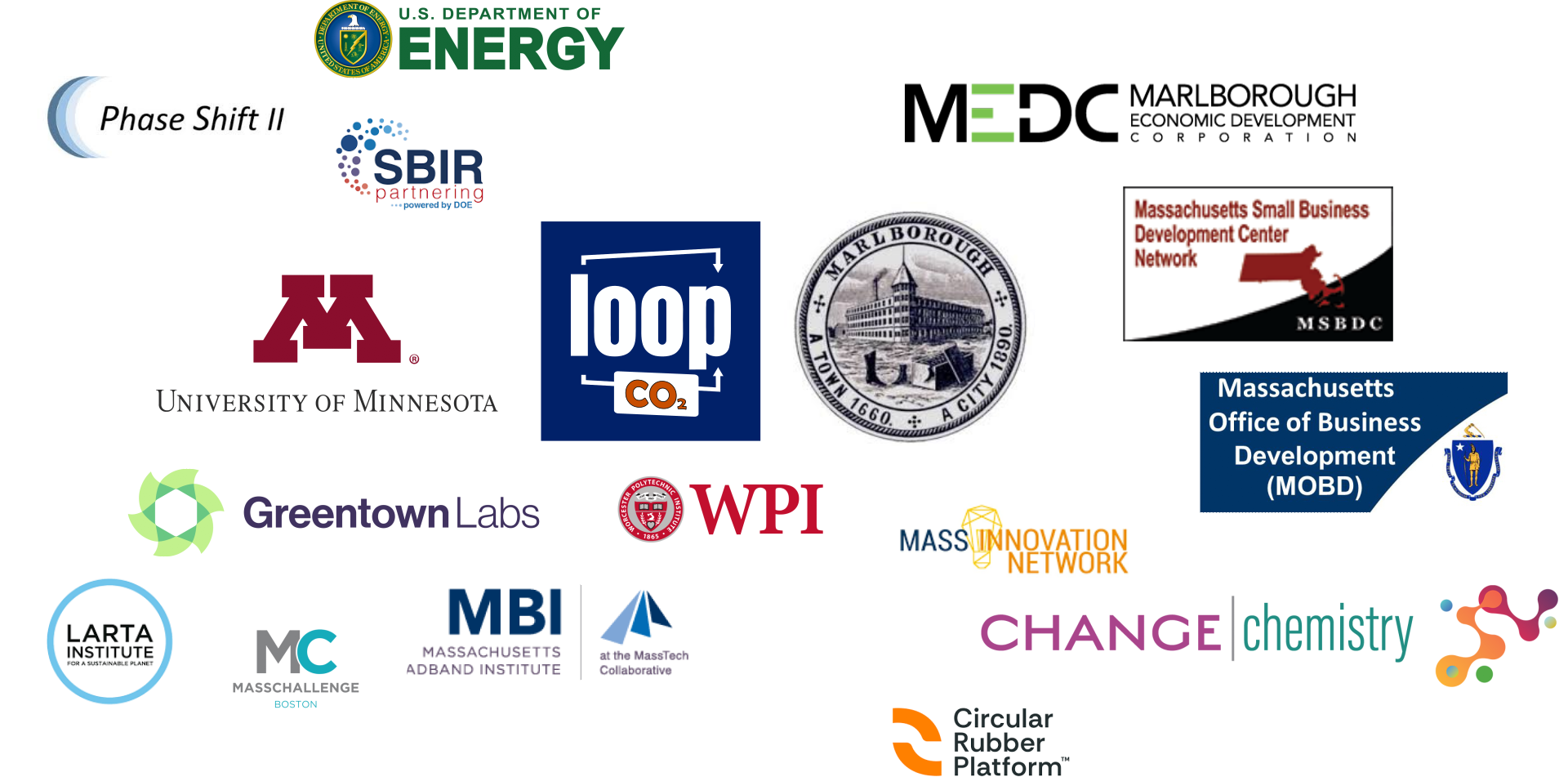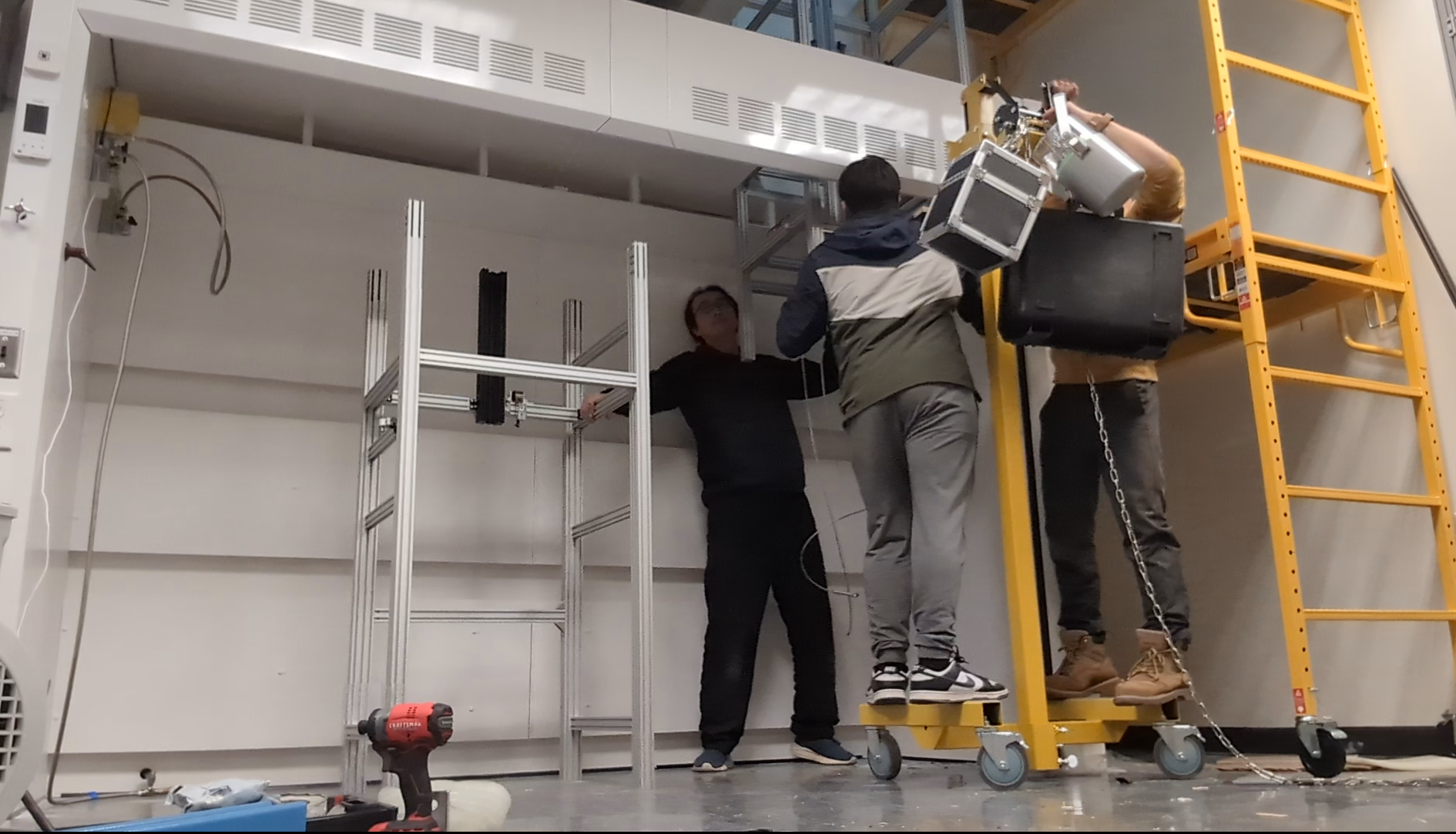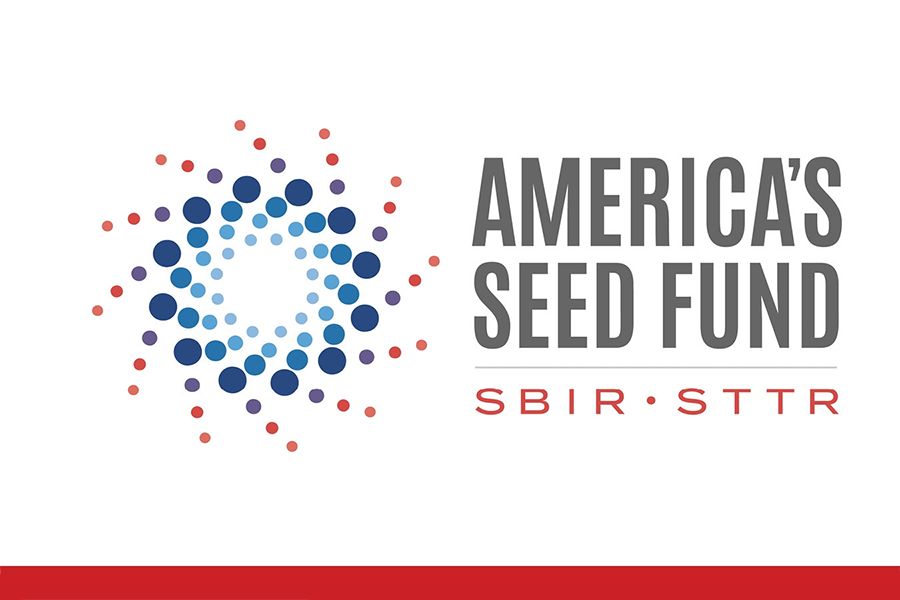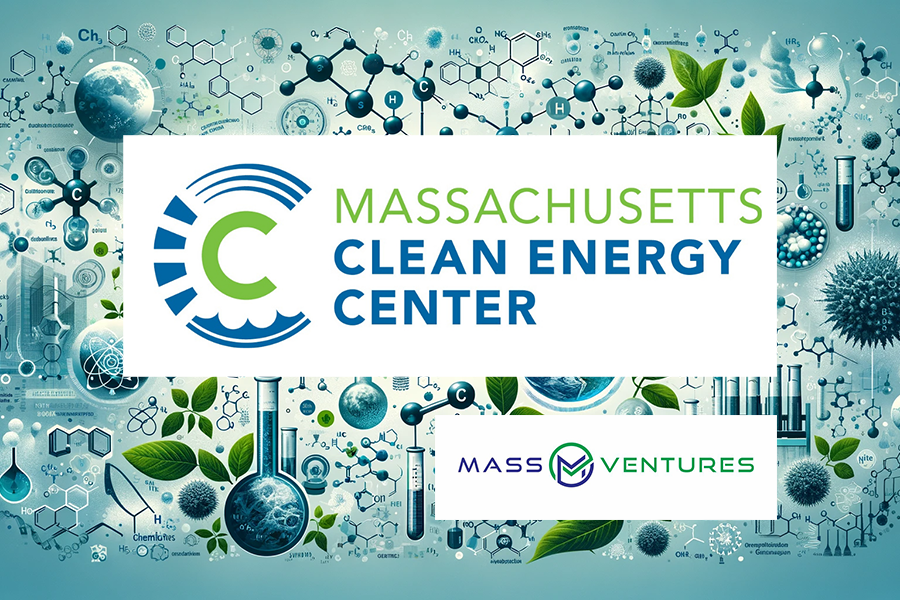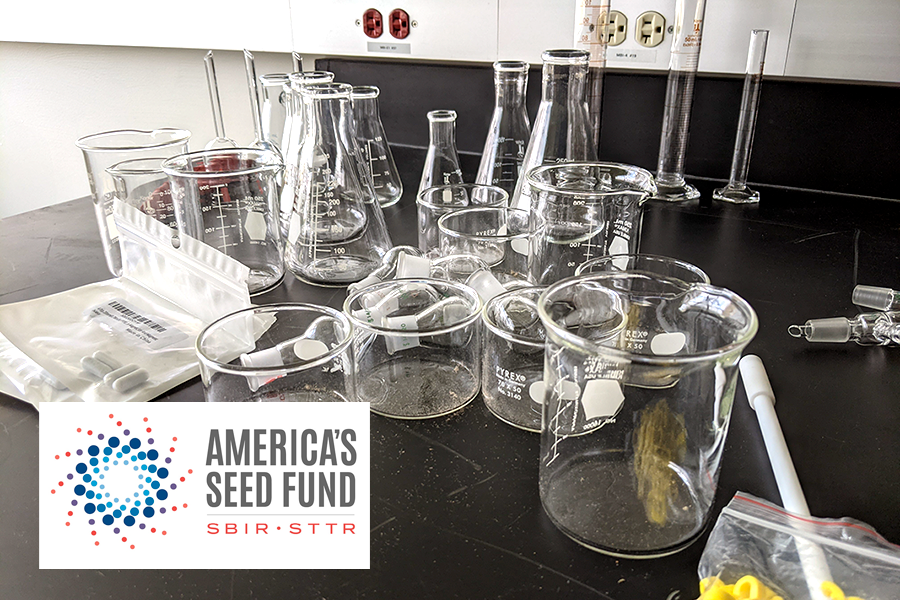Startup pioneering carbon-to-materials technology for a circular future marks major milestone Marlborough, Mass., Sept. 17, 2025 — Loop CO2 Inc., a leading startup transforming CO₂ into degradable, high-performance polymers, today announced the grand opening of its new research facility. The new lab — located at 260 Cedar Hill St., Lab #5, Marlborough, Mass.— is a significant advancement for the polymer industry by enabling the development of functional, debondable, and upcyclable CO₂-based polymers. The 3,000-square-foot facility represents a major investment in CO₂-utilization technologies. It will serve as a hub for cutting-edge research into next-generation polymers, enabling controllable pathways to produce low-VOC acrylics, BPA-free epoxies, biodegradable polyesters, and chemically recyclable polyurethanes. “Our new facility, equipped with a 16-foot-tall distillation tower and a 20-liter high-pressure autoclave, marks a significant step forward,” said Aone Wang, CEO of Loop CO₂, Inc. “These capabilities will accelerate advanced polymer development and support the broader adoption of advanced coatings; debonding-on-demand adhesives for consumer electronics and EV batteries; and chemically recyclable polyurethanes for inks, packaging, and laminations—reshaping the future of the plastics industry.” Looking ahead, Loop CO₂’s next milestone is the build-out of a 300-liter scale-up facility, which will expand production capacity for pilot projects with global brand and manufacturing partners. The 300-liter line is expected to add 8–10 new technical and operations jobs in Marlborough, supporting regional clean-tech workforce growth. Loop CO₂, Inc. thanks the City of Marlborough, the Massachusetts Clean Energy Center, MassVentures, the Massachusetts Innovation Network’s Eddies, Marlborough Economic Development Corporation(MEDC), Massachusetts Office of Business Development (MOBD), Massachusetts Small Business Development Center (MSBDC), the University of Minnesota and the U.S. Department of Energy for their support in development; Mass Challenge, Greentown Labs, MBI, WPI, Larta, University of Massachusetts Lowell Innovation Hub, TV Marlborough, and University of Minnesota Discovery Launchpad, DOE Vp3 program, DOE Phase Shift II for their support through incubation programs; and its collaborators at Change Chemistry and the Circular Rubber Platform. About Loop CO₂, Inc. Loop CO₂ is a materials company advancing carbon circularity through CO₂-based polymers. Using proprietary CO₂-derived monomers and scalable processes, the company develops functional, debondable, and upcyclable materials that enable low-VOC acrylics, BPA-free epoxies, biodegradable polyesters, bioplastic chain extender, and chemically recyclable polyurethanes. Loop CO₂ partners with manufacturers and brands to deliver drop-in solutions for adhesives, coatings, sealant, inks, elastomer in packaging, electronics, and EV automobile batteries —meeting performance targets while reducing environmental impact. For more information about Loop CO2, Inc. and the grand opening event, please visit loopco2.com.
20 Liter High Pressure Scale Up Lab is Ready to Operate
https://youtu.be/BJPEjXc_o_U Building a 20-liter high-pressure reactor lab with a 16-foot fast-exchangeable distillation tower on a limited budget is far more complicated than expected. With the funding support from the Department of Energy, we scaled up a lab from scratch. Let me share the whole fun journey here for whoever wants to build up their own chemistry lab. Piping and Instrumentation Diagram (P&ID)The whole process starts from P&ID design and equipment list planning. With the support from Hickory Run Consulting, LLC, we have the initial equipment list to identify the key instruments and their sizes. Site Location SearchConsidering the fumehood size and 16-foot distillation tower requirements, we have surveyed multiple sites from LoopNet (Commercial Real Estate Marketplace). After visiting multiple locations, we are fortunate to have received the full support of our Landlord, Enabling Us to establish our roots in this well-maintained building. Site LayoutIf you have enough funding, an engineering service will be recommended to plan your site layout. As for us, we have a diverse team including mechanical and industrial engineering capabilities. We design our layout by using OnShape 3D Modeling software. This allows us to play around with a different process layout and determine the trade-off of our process design. Detail Equipment Designa. Fume hoods:It is vital to provide enough exhaust air for the chemistry lab. We did consider the exhaust air, but we didn’t consider the make-up air in the first place. This cost us three months’ delay in operation. The height of the door is also essential to move the fumehoods in. A recess roller is a good tool to replace the pallet jack. b. High-Pressure Reactor:Given the stringent safety requirements of a high-pressure reactor system, we collaborate with SPEC engineering to refine the P&ID and engage a subcontractor to fabricate and seal the high-pressure pipes, thereby ensuring safety. c. 16-foot-tall distillation tower:Our CEO was a mechanical engineer. He designed the distillation tower based on the size of the distillation glassware. With the fast exchangeable column rail, we have the flexibility to adjust the column heights to optimize our operation. Due to the budget limitation, our whole team worked day and night to assemble each part of the distillation tower and install it through collaboration efforts. We are so proud to have built this system entirely on our own. Nice work, Loop CO2 team. Town Inspection:We didn’t engage the town early enough. This cost us a lot of trouble. After installing all the equipment, the town inspector came and determined that we don’t have enough make-up air in place. Thank you for the full support from our landlord, Dan. He instructs his team to get the makeup in and install it at full speed. The town has signed off on the permit. We are finally ready to put full speed on our scale-up sample production. From all these, we learned that: There is no traffic at 1 AM on I-90. A persistent team will always find a way to overcome the budget or technical challenge. It feels so good to hit a milestone.
Loop CO2 Secures $1.6M Department of Energy STTR Phase 2 Grant for Groundbreaking CO2 Utilization Technology
In a significant step towards sustainable innovation, Loop CO2, a pioneering company at the forefront of carbon dioxide utilization technology, has been awarded a $1.6 million grant from the Department of Energy (DOE) through the Small Business Technology Transfer (STTR) Phase II program. This award marks a pivotal moment for Loop CO2, as it enables the company to scale their laboratory efforts to a 10L scale, a crucial milestone towards commercializing their groundbreaking technology. Revolutionizing CO2 into Valuable Products Loop CO2 focuses on transforming CO2 into thermoplastic elastomers, materials with broad applications across multiple industries. This innovative approach not only helps consume the captured CO2 from the atmosphere but also turns a problematic greenhouse gas into valuable products. These thermoplastic elastomers can be utilized in creating cosmetic oils, adhesives, 3D printing filaments, synthetic rubber, and more, showcasing the versatile potential of Loop CO2’s technology. From Lab to Industrial Scale: A Leap Towards Sustainability The DOE’s STTR Phase II grant will assist Loop CO2 in scaling up their laboratory work to a 10L scale, a significant step that bridges the gap between research and industrial application. This scale-up is essential for validating the technology’s efficiency and feasibility in larger production scenarios. Moreover, it provides invaluable data and insights that will inform the development of future pilot plant production and licensing strategies, ensuring the technology’s smooth transition to market. Paving the Way for CO2 Utilization Loop CO2’s technology represents a paradigm shift in how we view and utilize carbon dioxide. By converting CO2 into a resource for producing thermoplastic elastomers, Loop CO2 is not only contributing to the fight against climate change but also opening up new avenues for sustainable materials. This approach has the potential to significantly impact various industries, offering a greener alternative to traditional materials and processes. Looking Forward With the support of the Department of Energy, Loop CO2 is set to embark on this exciting phase of scale-up and development. The success of their technology in moving from the lab to larger scale applications could herald a new era in CO2 utilization, demonstrating that environmental sustainability and economic viability can go hand in hand. As Loop CO2 progresses with its innovative work, the potential for broad industry application and contribution to carbon neutrality becomes increasingly tangible, showcasing the transformative power of green technology.
Loop CO2 Awarded a MassCEC/MassVentures Catalyst/DICES Grant
Loop CO2, an innovative start-up at the forefront of climate technology, is excited to announce the initiation of a groundbreaking study focusing on the moldability of CO2-based thermoplastic elastomers. This pioneering research aims to explore new horizons in sustainable material science, demonstrating our commitment to combating climate change through advanced technology. In the words of Albert Einstein, ‘Look deep into nature, and then you will understand everything better.’ Loop CO2 takes this to heart, innovating for a sustainable future. What are CO2-Based Thermoplastic Elastomers? CO2-based thermoplastic elastomers represent a new class of materials that incorporate carbon dioxide into their molecular structure, offering an eco-friendly alternative to traditional plastics. These materials combine the flexibility of rubber with the recyclability of plastics, presenting a promising solution for reducing carbon footprint across various industries. The Catalyst DICE Program: Bridging the Gap to Commercial Viability At this juncture, it’s pivotal to highlight the support mechanisms that enable such innovative endeavors. The Catalyst Program, a beacon of hope for researchers and early-stage companies, offers grants of up to $75,000 to bring climate technology prototypes from the drawing board to reality. Administered jointly by the Massachusetts Clean Energy Center (MassCEC) and MassVentures, Catalyst is dedicated to stimulating the commercialization of climate technologies developed within the Commonwealth. The Challenge that Catalyst addresses is a common hurdle in the technology development lifecycle: the leap from research to commercial viability. By providing essential funding for prototyping, Catalyst plays a crucial role in transforming innovative ideas into market-ready solutions. Loop CO2: Leading with Innovation and Sustainability At Loop CO2, we are proud to align our mission with the transformative goals of programs like Catalyst and DICES. Our study on CO2-based thermoplastic elastomers is not just a step towards a more sustainable future; it’s a leap towards redefining what’s possible in material science. We believe that through collaboration, innovation, and the support of forward-thinking initiatives, we can make a significant impact on the environment and the economy. Stay tuned for updates on our progress and learn more about how we’re working towards a greener, more sustainable future.
LoopCO2 Awarded a Small Business Technology Transfer Phase I Grant
The U.S. Department of Energy has awarded LoopCO2 a Small Business Technology Transfer (STTR) grant of $250,000 to advance CO2-based polyesters toward commercialization. LoopCO2 technology was first developed with support from the NSF Center for Sustainable Polymers. The focus of LoopCO2’s research will be the development of thermoplastic elastomers that can be depolymerized back to their original monomer and reused via a recycling mechanism. A difficult task to achieve in existing polyesters! This will result in a new class of polyester materials in the form of pellets for manufacturing consumer products. The competitive advantage will be the production of monomer that can achieve negative carbon emission. Initial testing of one of the resultant polyesters indicates that it is both inherently biodegradable in wastewater and chemically recyclable. In the next year, LoopCO2 hopes to tweak the material properties to match the industrial needs and engage with mainstream product development teams. The thermoplastic elastomers could be used in cell phones for companies such as Apple, and Google. There is also potential for the elastomers to make their way into CO2-based 3D printing materials for companies like HP.

